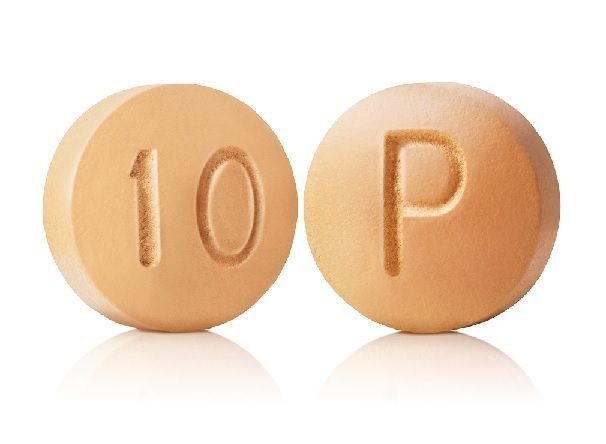
Contents
- 1 Side Effects of Nuplazid (pimavanserin)
Side Effects of Nuplazid (pimavanserin)
Nuplazid (pimavanserin) treats hallucinations and delusions in Parkinson’s disease psychosis.
The mechanism of action of Nuplazid in treating hallucinations and delusions in Parkinson’s disease psychosis is unknown. Nuplazid may work by acting on serotonin 5-HT2A and 5-HT2C receptors.
Common side effects of Nuplazid include
- nausea,
- constipation,
- swelling of extremities,
- gait disturbance,
- hallucinations, and
- confusion.
Serious side effects of Nuplazid include increased risk of death in elderly patients with dementia-related psychosis treated with antipsychotic drugs.
- antiarrhythmics,
- antibiotics (gatifloxacin, moxifloxacin),
- strong CYP3A4 inhibitors (itraconazole, ketoconazole, clarithromycin, indinavir), and
- strong CYP3A4 inducers (rifampin, carbamazepine, phenytoin, St. John’s wort).
No data on Nuplazid use in pregnant women is available regarding the risk of birth defects or miscarriage.
There is no information about the presence of Nuplazid in breast milk, its effects on the breastfed infant, or on milk production. Consider the benefits of breastfeeding along with the need for Nuplazid and potential effects on the infant from Nuplazid or the mother’s condition.
Side Effects of Nuplazid (pimavanserin)
WARNING
Elderly patients with dementia-related psychosis treated with antipsychotic drugs have an increased risk of death. Nuplazid is not approved for treating dementia-related psychosis unrelated to hallucinations and delusions associated with Parkinson’s disease psychosis.
Nuplazid should not be used in patients with a history of a hypersensitivity reaction to pimavanserin or any of its components. Rash, urticaria, and angioedema reactions have been reported.
Nuplazid should also be avoided in patients with a history of cardiac arrhythmias, as well as other circumstances that may increase the risk of torsade de pointes and/or sudden death, including bradycardia, hypokalemia or hypomagnesemia, and congenital prolongation of the QT interval.
Common Adverse Reactions:
- Nausea,
- Constipation,
- Peripheral Edema,
- Gait disturbance,
- Hallucination,
- Confusional state.
Nuplazid (pimavanserin) side effects list for healthcare professionals
The following serious adverse reactions are discussed elsewhere in the labeling:
- Increased Mortality in Elderly Patients with Dementia-Related Psychosis
- QT Interval Prolongation
Clinical Trials Experience
Clinical trials cannot directly compare adverse reaction rates between different drugs or reflect real-world rates.
The clinical trial database for Nuplazid consists of over 1200 subjects and patients exposed to one or more doses of Nuplazid.
- 616 patients with hallucinations and delusions associated with Parkinson’s disease psychosis (PDP).
- In placebo-controlled studies, most patients received once-daily Nuplazid 34 mg (N=202) compared to placebo (N=231) for up to 6 weeks.
In the controlled trial setting, the study population was approximately 64% male and 91% Caucasian, with a mean age of about 71 years.
- Additional clinical trial experience in patients with hallucinations and delusions associated with PDP comes from two open-label safety extension studies (total N=497).
- Most patients received long-term treatment with 34 mg once-daily (N=459).
- Over 300 patients have been treated for more than 6 months; over 270 have been treated for at least 12 months; and over 150 have been treated for at least 24 months.
The following adverse reactions are based on the 6-week, placebo-controlled studies in which Nuplazid was administered once daily to patients with hallucinations and delusions associated with PDP.
Common Adverse Reactions (≥5% and at least twice the rate of placebo):
- peripheral edema (7% Nuplazid 34 mg vs. 2% placebo) and
- confusional state (6% Nuplazid 34 mg vs. 3% placebo).
Adverse Reactions Leading To Discontinuation Of Treatment
8% (16/202) of Nuplazid 34 mg-treated patients and 4% (10/231) of placebo-treated patients discontinued due to adverse reactions. Adverse reactions that occurred in more than one patient and with an incidence at least twice that of placebo were
- hallucination,
- urinary tract infection,
- fatigue.
Adverse reactions that occurred in the 6-week, placebo-controlled studies with an incidence of ≥2% and >placebo are presented in Table 1.
Table 1 Adverse Reactions in Placebo-Controlled Studies of 6-Week Treatment Duration and Reported in ≥2% and >Placebo
| Percentage of Patients Reporting Adverse Reaction | ||
| Nuplazid 34 mg | Placebo | |
| N=202 | N=231 | |
| Gastrointestinal disorders | ||
| Nausea | 7% | 4% |
| Constipation | 4% | 3% |
| General disorders | ||
| Peripheral edema | 7% | 2% |
| Gait disturbance | 2% | |
| Psychiatric disorders | ||
| Hallucination | 5% | 3% |
| Confusional state | 6% | 3% |
Adverse Reactions In Demographic Subgroups
Examination of population subgroups in the 6-week, placebo-controlled studies did not reveal any differences in safety based on age (≤75 vs. >75 years) or sex.
Due to the predominance of Caucasians (91%), racial or ethnic differences in Nuplazid’s safety profile could not be assessed.
In the 6-week, placebo-controlled studies, no clinically relevant differences in the incidence of adverse reactions were observed among those with a Mini-Mental State Examination (MMSE) score at entry of less than or equal to 20 compared to those with a score greater than 20.
Postmarketing Experience
The following adverse reactions have been reported in postapproval use of Nuplazid: rash, urticaria, angioedema, somnolence, falls, agitation, and aggression.
Drug Interactions with Nuplazid (pimavanserin)
Drugs Having Clinically Important Interactions With Nuplazid
Table 2 Clinically Important Drug Interactions with Nuplazid
| QT Interval Prolongation | |
| Clinical Impact: | Concomitant use of drugs that prolong the QT interval may add to the QT effects of Nuplazid and increase the risk of cardiac arrhythmia. |
| Intervention: | Avoid the use of Nuplazid in combination with other drugs known to prolong the QT interval. |
| Examples: | Class 1A antiarrhythmics: quinidine, procainamide, disopyramide; Class 3 antiarrhythmics: amiodarone, sotalol; Antipsychotics: ziprasidone, chlorpromazine, thioridazine; Antibiotics: gatifloxacin, moxifloxacin |
| Strong CYP3A4 Inhibitors | |
| Clinical Impact: | Concomitant use of Nuplazid with a strong CYP3A4 inhibitor increases pimavanserin exposure. |
| Intervention: | If Nuplazid is used with a strong CYP3A4 inhibitor, reduce the dosage of Nuplazid. |
| Examples: | itraconazole, ketoconazole, clarithromycin, indinavir |
| Strong or Moderate CYP3A4 Inducers | |
| Clinical Impact: | Concomitant use of Nuplazid with strong or moderate CYP3A4 inducers reduces pimavanserin exposure. |
| Intervention: | Avoid concomitant use of strong or moderate CYP3A4 inducers with Nuplazid. |
| Examples: | Strong inducers: carbamazepine, St. John’s wort, phenytoin, rifampin Moderate inducers: modafinil, thioridazine, efavirenz, nafcillin |
Drugs Having No Clinically Important Interactions With Nuplazid
No dosage adjustment of carbidopa/levodopa is required when administered concomitantly with Nuplazid.
Does Nuplazid (pimavanserin) cause addiction or withdrawal symptoms?
Drug Abuse And Dependence
Controlled Substance
Nuplazid is not a controlled substance.
Abuse
Nuplazid has not been systematically studied for its potential for abuse, tolerance, or physical dependence.
While clinical trials did not reveal increases in drug-seeking behavior, the limited experience from the trials does not predict the extent to which a CNS-active drug will be misused, diverted, and/or abused once marketed.
Summary
Nuplazid (pimavanserin) treats hallucinations and delusions in Parkinson’s disease psychosis. Common side effects of Nuplazid include nausea, constipation, swelling of extremities, gait disturbance, hallucinations, and confusion. No information is available about Nuplazid in breast milk, its effects on the infant, or on milk production.


